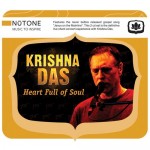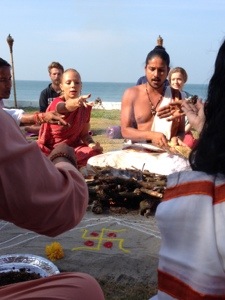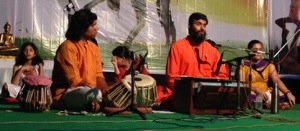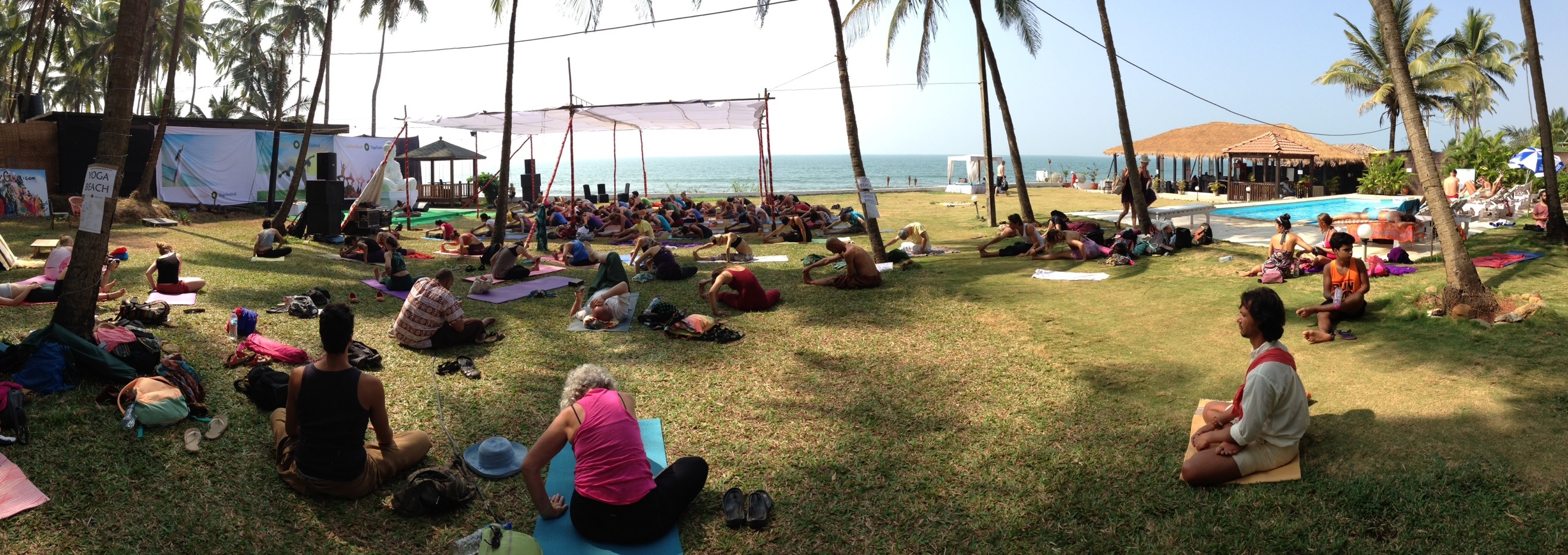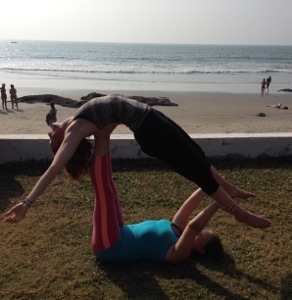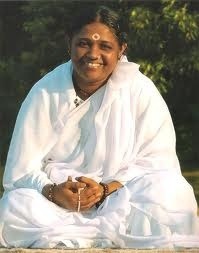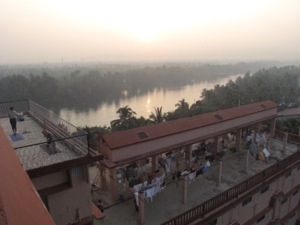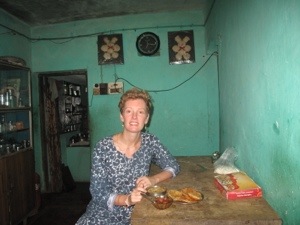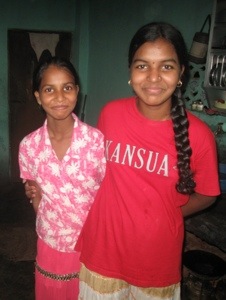Hello pop pickers!
Off the back of what may have been Harpenden’s inaugural evening of Sanskrit chanting last weekend, I’d like to share my favourite chanting albums with you.
You’ve got no excuses now – you can get your Om on in the car, whilst doing the washing up, or on the 8:04 to London St Pancras. As with all the best hit parades, we’ll start in reverse order (click on the titles to buy/listen to the albums):
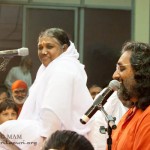 10: Bhajans (songs) from any of Amma’s World Tours
10: Bhajans (songs) from any of Amma’s World Tours
Amma, otherwise known as ‘the Hugging Mother’ loves to chant. I’ve chanted with her on her world tour when she’s visited Alexandra Palace in North London, and I’ve also been honoured to join her at her ashram in Kerala. In Kerala she had me in tears (read about my Amma experience).
Her chanting is proper traditional Indian yoga chanting and a proper slice of devotion (bhakti).
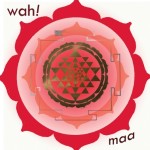 9: Wah! – Maa
9: Wah! – Maa
And now for something completely different… Featuring the music of American singer/yogi Wah Devi, she mixes traditional Sanskrit mantras with a bit of funk and dance.
Not at all traditional but rather good none the less.
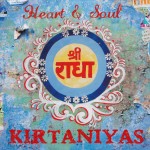 8: The Kirtaniyas – Heart and Soul
8: The Kirtaniyas – Heart and Soul
I first heard of this group last year via the harmonium teacher Daniel Tucker and I really like this album. They’re not amazingly well known and you can download via their website by simply naming your price.
When they chant ‘Hari Bol’ I always think they’re saying ‘horrible’ over and over again.
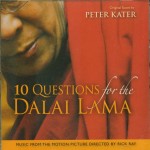 7: Peter Kater – 10 Questions for the Dalai Lama
7: Peter Kater – 10 Questions for the Dalai Lama
Ok, this isn’t strictly a kirtan (chanting) album. It’s the soundtrack for a film about His Holiness the Dalai Lama but it does feature Tibetan Buddhist chanting. It’s by multi-platinum selling Pianist/Composer/Producer Peter Kater, who has received six Grammy award nominations. He’s amazing. It’s amazing.
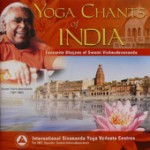 6: Sivananda – Yoga Chants of India
6: Sivananda – Yoga Chants of India
This album features snippets of audio sung by Swami Sivananda and Swami Vishnudevananda – the teachers who founded the school of yoga where I originally did my teacher training.
It also features modern takes on traditional chants, including one led by Swami Krishnadevananda who ran the Putney Sivananda Centre where I taught for a few years. He was about six foot five, from South Carolina and he rocked the harmonium. The version of Raghu Pati Raghava provides a chance to hear his voice.
And now for this week’s top five…
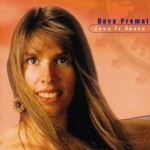 5: Deva Premal – Love is Space
5: Deva Premal – Love is Space
If you’re interested in yoga music, it’s a given that you’ve heard of the lovely Deva. She’s sold around a million CDs internationally and visited London last month as part of a world tour.
I really don’t like this album cover but her version of the Gayatri Mantra is fab.
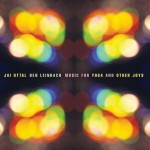 4. Jai Uttal and Ben Leinbach – Music for Yoga and Other Joys
4. Jai Uttal and Ben Leinbach – Music for Yoga and Other Joys
This is a chilled out yoga album. Think Goan beachfront café made of coconut palm fronds, sitting watching the sunset… and that’s where this album takes you. It’s Café del Mar meets yoga.
Nataraja is my favourite.
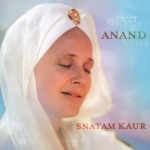 3. Snatam Kaur – Anand
3. Snatam Kaur – Anand
Snatam is slightly different to the other yogis included here. She chants in Gurmukhi – a language that’s Sanskrit based, but not pure Sanskrit – and she was brought up in the Sikh Kundalini yoga lineage as taught by Yogi Bhajan.
She has a wonderful voice and the name of this album – Anand – translates as ‘bliss’.
2. Krishna Das – Heart Full of Soul
Called ‘the American chant master’ for good reason, Krishna Das is another kirtan stalwart.
The first time I saw him in London, I was blown away. It was at the Union Chapel on Upper Street and everyone really gave their hearts and a lot of soul.
And it’s a non-mover at number one…
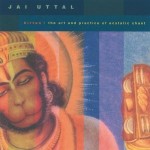 1. Jai Uttal – kirtan: the art and practice of ecstatic chant
1. Jai Uttal – kirtan: the art and practice of ecstatic chant
This is my favourite kirtan album. It’s two CDs and contains over two hours of great chanting. Jai also gives an introduction to the practice and talks about what drew him to it.
His voice gives you energy and you’ll be joining in in no time…
So that’s my top 10. Have I missed your favourite out? Feel free to comment below as I’m always looking to expand my CD/iTunes collection…
Oh and we’re going to set another date for a Harpenden chanting evening. If you’d like to come and I don’t have your email address, email me.


